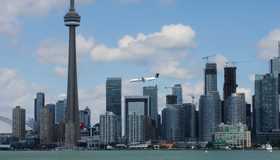Future of transport: city airports / Global
Ground control
Our editor in chief is no stranger to airports and so knows the appeal of landing close to the heart of the action as opposed to being stranded out in the sticks. Will 2016's city-planners get on board?

Gather a group of seasoned travellers of a certain age around a fine dining table, gently steer the conversation to somewhere close to the South China Sea and before long a curious thing will happen. While the discussion might have been focusing on stalled infrastructure initiatives in Thailand or the attractions of buying farmland on Kyushu, a mention of Hong Kong will soon trigger one of the assembled cast to talk about the good old days of flying into the city’s old Kai Tak Airport.
No doubt you’ve heard this tale trotted out many times before. But in case you’ve somehow missed it or never had the pleasure of roaring between tower blocks in a Cathay 747 during an approaching typhoon, the guests will all have stories about how you could practically read the labels on the undies flapping on laundry lines or determine what the residents on the 15th floor of Wing Ho towers were having for dinner.
They will talk about the dips and swerves that were made during the complicated approach and why you would want a good Brit or Aussie at the controls of a jumbo if you were coming in with a stiff crosswind. While much of the reminiscing will be centered around the rush of landing in a big Boeing on civil aviation’s version of an aircraft carrier, what many might miss is the simple fact that touching down at Kai Tak also put them in the heart of Asia’s most important financial centre.
There’s something to be said for airports that specialise in total immersion, where you swoop in alongside the towers and monuments of a city centre, there’s life on the streets as traffic and pedestrians crisscross below and you can be part of it all 20 minutes after touchdown. Kai Tak might be gone but you can still get that feeling flying into Stockholm’s Bromma, New York’s LaGuardia, Toronto’s Billy Bishop, Taipei’s Songshan and Lisbon’s Portela. The grand international hub that is 70km away from the city it claims to be serving is often so remote that it makes the arriving passenger feel more disconnected than they might have felt in-flight. Whether its on a purpose-built highway or gleaming rail corridor, the transition from swooping terminal to the desired destination can be both tedious and something of a turn-off.
A knowledgeable traveller would much rather plan their travel via another Asian city so they can fly into Seoul’s Gimpo Airport rather than land at Incheon. The same goes for Milan and opting for Linate rather than Malpensa. While we’re not fans of Heathrow and would like to see London have a better international hub, we’re also happy that plans were shelved for a sprawling super-hub in the Thames Estuary.
The attractions of making a statement by building a new airport are obvious. It creates jobs, builds buzz, pleases constituents who live under the flight paths of existing airports and can keep teetering governments in office. Replacing an existing airport might look like an environmentally friendly exercise from a PR perspective but isn’t it better to refurbish rather than bulldozing a greenfield site? As aircraft become cleaner and quieter, doesn’t it make more sense to keep people closer to where they want to be rather than shuttling them an hour away? Isn’t it appealing to think you can cycle from your apartment in Toronto to the city’s island airport rather than sitting in traffic in an over-priced taxi or limo?
Just as we like inter-city trains because they take us from one city centre to the next, smart mayors and planners should think about how they can get more out of their conveniently located aerodromes rather than turning them into a collection of unsightly box stores.


